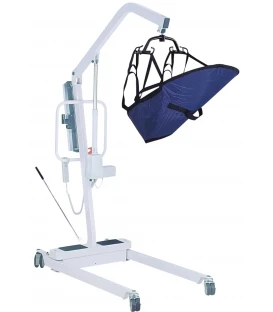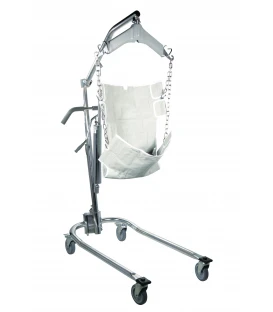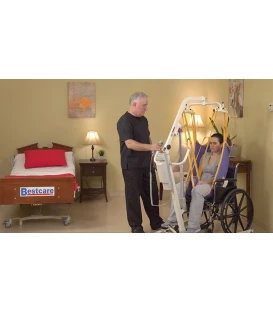Patient Lifts: Enhancing Mobility, Ensuring Safety

The development of patient lifts has revolutionized care for the disabled and elderly, demonstrating how health care technology can dramatically improve patient mobility, independence, and safety. Patient lifts provide a system of mechanical support that helps caregivers transfer patients from one location to another, alleviating the physical strain that can often lead to caregiver injuries.
Understanding Patient Lifts
Patient lifts, often known as hoists, are mechanical devices used to lift and move people who have limited mobility. These devices offer a safe, comfortable, and efficient way for caregivers to assist patients in movement. Patient lifts can be manual, powered by a hand pump, or electric, controlled via buttons. The lift consists of a sling that cradles the patient, attached to an overhead beam or a free-standing structure.
There are several types of patient lifts. Floor lifts or mobile lifts are the most common and versatile. They have a base on wheels and can move from room to room, lifting patients from beds, wheelchairs, or the floor. Overhead or ceiling lifts are installed into the ceiling and allow for efficient patient transfer with minimal physical exertion from the caregiver. Sit-to-stand lifts are designed to assist patients who have some weight-bearing ability but require help standing from a seated position. Lastly, bathtub lifts help patients safely into and out of the bath.
The Impact on Caregiving
The physical demand of caregiving can be extreme. Studies indicate that nurses and caregivers often experience musculoskeletal injuries due to the manual lifting and transferring of patients. Using patient lifts reduces the risk of these injuries by taking on the physical burden of lifting.
Moreover, patient lifts can enhance the quality of care delivered. The ease of movement they provide enables caregivers to spend more time attending to patients' other needs, leading to better patient outcomes and increased caregiver satisfaction.
Safety and Comfort for Patients
For patients, especially those with chronic conditions or limited mobility, the process of being moved can be distressing and potentially harmful. Patient lifts significantly mitigate these issues. They provide a secure and comfortable means of movement that reduces the risk of patient falls, skin tears, and other injuries associated with manual transfers.
Additionally, the use of patient lifts can empower patients by giving them a sense of independence and control over their movement. They can participate in their care to a greater extent and engage more readily in rehabilitation exercises when appropriate.
Choosing the Right Patient Lift
Selecting a patient lift should be a process involving thorough consideration and consultation with healthcare professionals. Factors such as the patient's weight, mobility level, and the frequency of transfer should guide the decision.
For example, a sit-to-stand lift may be most suitable for patients with partial weight-bearing ability, while a mobile lift may be more appropriate for a patient needing regular transfer between rooms. In cases where transfers are frequent and the environment permits, a ceiling lift would provide a permanent, efficient solution.
Furthermore, the chosen patient lift should meet safety standards and be easy for caregivers to operate. Training on proper use is crucial to prevent misuse, which could potentially result in injury.
Conclusion
Patient lifts are a significant development in patient care, effectively addressing the need for a safe, efficient means of moving those with limited mobility. They offer an invaluable solution, protecting caregivers from injury while enhancing the comfort, safety, and independence of patients.
As with any medical equipment, understanding the types and uses of patient lifts, and selecting the right one, requires careful consideration and professional advice. With the correct choice and usage, patient lifts can significantly improve the quality of life for both patients and caregivers, making them a vital tool in modern health care.
In this era of rapidly advancing medical technology, patient lifts stand as a testament to how innovative solutions can transform care practices. As these technologies continue to develop, we can anticipate even greater enhancements to patient safety, comfort, and dignity.















